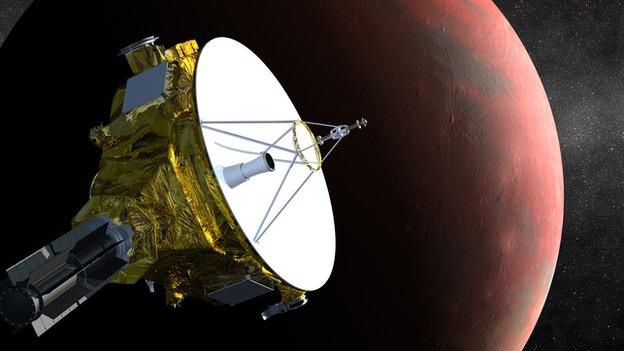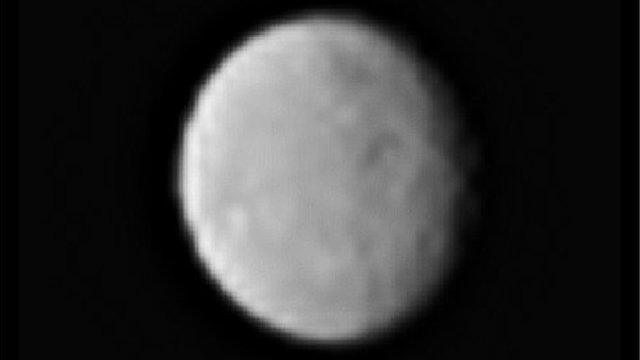Best ever view of asteroid Ceres
- Published

Particularly intriguing is the white spot in the Northern Hemisphere
The best image ever acquired of the largest asteroid in the Solar System is now in the hands of science.
The 950km-wide object, known as Ceres, has been pictured at a resolution that exceeds anything seen previously by telescopes, even Hubble.
Nasa's Dawn spacecraft can see details on the icy rock's surface down to a scale of 22km per pixel.
And that view will only get better as the probe heads towards its historic rendezvous with Ceres on 6 March.
The new picture was taken on Monday from a distance of 237,000km.
By 12 February, with the gap narrowed still further, the resolution will be four times better than Hubble; and by 20 February it will be eight times better.
Of particular interest is the "white spot" in the Northern Hemisphere. Hubble could discern this feature, too, but exactly what it is remains to be determined.
It is very probably an impact crater. For the first time, Dawn can see a dark area next to the spot which could be the shadow cast by the crater's rim.
Models of the asteroid suggest its interior is dominated by a rocky core topped by ice that is then insulated by rocky lag deposits at the surface. Some researchers suspect there may even be an ocean of liquid water at depth.
Such a construction would make Ceres' surface quite responsive, meaning craters would not hold a defined shape for long before relaxing and losing some of their structure. For the white spot to stand so proud may indicate therefore that its formation was relatively recent.
Ceres is the dominant member of the band of rocky debris that circles the Sun between the orbits of Mars and Jupiter. Its great size means gravity has pulled it into a roughly spherical shape.
As well as being an asteroid, it is classed as a "dwarf planet" and has the honour of being the first such body to be visited by a spacecraft.
The second dwarf to get a visit will be Pluto. It will receive a flyby from Nasa's New Horizons probe in July.
Jonathan.Amos-INTERNET@bbc.co.uk and follow me on Twitter: @BBCAmos, external
- Published25 January 2015

- Published19 January 2015

- Published9 January 2015